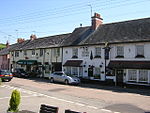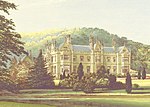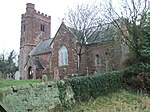Haldon Hills
Folly castles in EnglandHills of Devon

The Haldon Hills, usually known simply as Haldon, is a ridge of high ground in Devon, England. It is situated between the River Exe and the River Teign and runs northwards from Teignmouth, on the coast, for about 24 km (15 mi) until it dwindles away north west of Exeter at the River Yeo, just south of Crediton. The highest points of just over 250 metres (820 ft) lie to the south west of Exeter. The southernmost part is known as Little Haldon; it is partially separated from the main bulk of the hills by a col formed by the valleys of the Dawlish Water to the east and the valley at Rixdale to the west.
Excerpt from the Wikipedia article Haldon Hills (License: CC BY-SA 3.0, Authors, Images).Haldon Hills
Haldon Hill, Teignbridge Kenn
Geographical coordinates (GPS) Address Nearby Places Show on map
Geographical coordinates (GPS)
| Latitude | Longitude |
|---|---|
| N 50.64 ° | E -3.55 ° |
Address
Exeter Racecourse
Haldon Hill
EX6 7XS Teignbridge, Kenn
England, United Kingdom
Open on Google Maps









